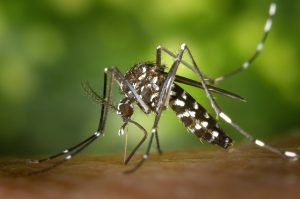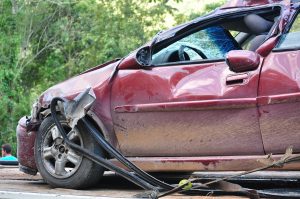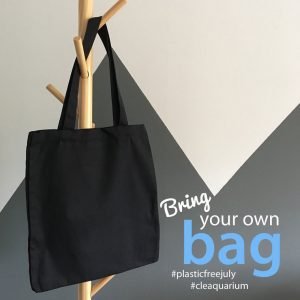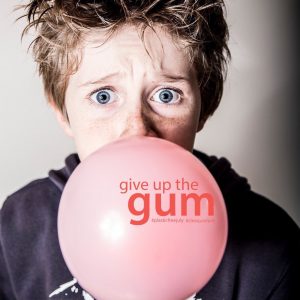5 Things I Learned: Anableps
Quickly swimming at the surface, Anableps anableps can be difficult to spot despite the fact that they swim in schools. Let’s get a closer look at these unique fish.
Nature. It’s a curious thing.
– Megan Brown, Intern
Quickly swimming at the surface, Anableps anableps can be difficult to spot despite the fact that they swim in schools. Let’s get a closer look at these unique fish.
Nature. It’s a curious thing.
– Megan Brown, Intern
When Earth’s surface is 70% water, it’s easy to think that water is abundant. However, this is not the case.
Did you know that less than 1% of the Earth’s water is available to 7.5 billion people? This is because the majority of the Earth’s water is saltwater, leaving freshwater making up only 3%. Most freshwater is unavailable for use because it is trapped in glaciers, stored in the atmosphere and soil, too deep in the earth to attain, or highly polluted.
This leaves very little water to share between so many people. Especially when the average American uses between 80-100 gallons of water each day.
With this in mind, it is important to reconsider how we use water every day. Even as individuals, it is possible to make a big difference by changing our habits. Every drop counts!
Turn off the Faucet
This is the simplest bad habit to break! There’s no need to have the water running when you brush your teeth. You also don’t need to faucet running when you rinse food and dishes. Soak them instead!
Check for Leaks
One drip every second adds up to 5 gallons a day! Check your faucets, shower heads, and toilet for any leaks.
Stick to One Cup
Designate one glass or bottle to drink water from each day. You will avoid have to wash excess glasses
Shorten Your Showers
By shortening your shower by a minute, you can have about 150 gallons of water a month. If you can get your shower time down to 5 minutes, you’ll save 1,000 gallons a month!
Opt for the Dishwasher Over Handwashing
Washing dishes by hand results in constant running water. Meanwhile, a dishwasher will use about half the amount of water for the same amount of dishes. Using a dishwasher is less work for you anyways!
Only Do Full Loads
When using the dishwasher or washing machine wait until they are full to run them. This will save your 20 gallons of water per wash! You’ll also waste less soap and detergent.
Repurpose Water
A lot of water is wasted every day when it could easily be used for a different purpose. While waiting for the hot water, collect the cold water and use it to water plants. Collect rainwater to use for the same purpose.
Water is finite, and it is important to conserve this valuable resource. Make it a goal to have as little water flow down the drain as possible. Conserving water takes commitment, but the result is well worth it. You will not only make a huge difference on your water bill, but for the environment as well!
– Megan
Seahorses are one of the most well-known and recognizable creatures in the ocean. Their long snouts and curly tails are clear giveaways of their identities. However, these characteristics are not exclusively associated with seahorses. Located in the waters of southern Australia lives an obscure relative of the seahorse: the seadragon. Seadragons are in the same family as seahorses (Syngnathidae) but they are different in a number of ways. Seahorses are quite common and are found in tropical and subtropical waters all around the world, while seadragons are exclusively found near Australia. Also, there are many species of seahorses (around 47) and only three species of seadragons.
Aside from taxonomic classifications and geographic distributions, the main differences between seahorses and seadragons are physical. Seahorses are known for having a prehensile tail, which means they can use their tail to grasp onto things such as plants or even each other. Since seahorses are not good swimmers, the prehensile tail allows them to anchor themselves so they do not get swept away by currents and can remain hidden from predators. Seadragons lack this prehensile tail and rely on camouflage to avoid predation. They have leaf-like appendages to resemble the underwater plants around them, allowing them to blend into their surroundings. In addition, seadragons have slightly longer snouts than their seahorse relatives.
Another one of the main differences between seahorses and seadragons is the way they carry their young. Both seahorse and seadragon young are carried by the males, but in different ways. Seahorse males have a fully enclosed pouch into which females deposit eggs; the males carry those eggs until the young hatch. Seadragon males have a spongy patch located underneath their tail where they carry the eggs.
Besides these main differences, seahorses and seadragons are actually quite similar. At the Greater Cleveland Aquarium, we have one seahorse and one seadragon species. The next time you visit, keep an eye out for the potbelly seahorse (Hippocampus abdominalis) and the weedy seadragon (Phyllopteryx taeniolatus) and see if you can notice their differences!
Want to know more?
• Kelly, Jasey. “The Differences between the Sea Dragon & Seahorse.”
• MarineBio. “Leafy Sea Dragons, Phycodurus eques.”
• Ocean Conservancy. “Wildlife Fact Sheets: Seahorse.”
– Charlotte
Coral reefs are some of the most important habitats that have developed over hundreds of millions of years on Earth. Most people believe that corals are plants, but they are actually invertebrates with simple stomachs and a single mouth, much like jelly fish and sea anemone. Although they roughly occupy less than 1% of the ocean floor, coral reefs are home to about 25% of all ocean species! They comprise the largest living structure in the world and can even be seen from outer space, and with all that biodiversity they are important to much more than just themselves. Unfortunately, coral reefs are diminishing right before our eyes with climate change, greenhouse gas emissions, and ocean acidification altering our oceans water chemistry.
Ocean acidification has caused the chemistry of our oceans to change drastically in a relatively short period of time. Since the industrial revolution, the burning of fossil fuels for cars, industries and electricity has left the world in a cloud of continual CO2 emissions that collect in the atmosphere. With our oceans taking up about two-thirds of Earth’s surface, they are the largest source of CO2 removal from air. The oceans remove about one-third of all CO2 emissions from the atmosphere, but when too much carbon dioxide is absorbed into our oceans it can be harmful to the animals living within them.
When CO2 is introduced to saltwater, it causes complex chemical reactions that ultimately increase the acidity of the water. Ocean water pH stayed stable over the last 300 million years, around 8.2, which is the most comfortable region for corals to grow and flourish. Since the industrial revolution, we have seen a pH shift from 8.2 to around 8.1 and 8.0 in certain regions of the world. Although a 0.1 or 0.2 decrease in pH seems extremely small, it actually accounts for a 25% increase in acidity in only 100 years! These drastic changes in the pH and temperature of the oceans in a very short period has left many of our animals in shock, especially our corals.
Corals natural environment and comfortable living conditions are quickly changing in a way that’s not unlike animals that lose their habitats to deforestation or natural disasters. Most corals are not able to acclimate to the more acidic environments that have come about in the last 100 years. In turn, corals become so stressed out by the changing water chemistry that they ultimately undergo coral bleaching events.
Individual corals are called polyps and multiple coral polyps in an area are called a colony. There are both hard and soft corals that live in the ocean, but most of us have seen hard corals that live in shallow tropical waters. These hard corals have a calcium carbonate structure that would be similar to our bones. Polyps grow off this skeleton that contain algae called zooxanthellae. Zooxanthellae not only give corals their bright, vibrant colors, but also support the life of these corals by helping trap food and offering protection.
During coral bleaching, acidic waters cause corals to “kick out” the zooxanthellae living in their polyps. Once this happens, the coral is not able to protect itself or get the food it needs and in turn, the polyps begin to peel off the skeleton like fleshy material until only the calcium carbonate skeleton is left.
So why should we care about coral bleaching? First of all, corals are one of best places for life to flourish! With nearly 25% of all ocean species living on or near coral reefs, they offer homes, protection and food for many animals. Coral reefs are also a great barrier to coastal areas when there are hurricanes and rough waters as they block water from flooding and destroying natural coastal regions. Additionally, tourism in many places will drop off without the reefs. Some regions depend on the natural beauty of coral reefs as a source of income for aquatic excursions.
Even though it might sound like corals as we know them have come to their end, there are steps we can take to have a positive impact. Educating ourselves and others about the harmful effects of CO2 emissions is a critical step. Emphasizing careful viewing of corals is also important. (Humans shouldn’t touch, pick up or take home wild corals any more than we should sharks, eels, jellyfish and other living things.) We can support research institutions such as Mote Marine Laboratory or the Coral Restoration Foundation Education Center that are devoted to learning more about coral and saving our reefs. And, most directly, we can cut down on our CO2 emissions in any way possible. This could mean using less energy and water at home, riding bikes to school or carpooling to the places you need to go, recycling products we use every day and making sure we aren’t polluting our water ways. For more information about coral bleaching, check out Chasing Corals, an amazing Netflix documentary that shows the harmful effects of coral bleaching and highlights some of the great people out there working to restore our reefs. https://www.youtube.com/watch?v=b6fHA9R2cKI
It might be hard to find a bushynose pleco, but that’s by design! Take a closer look at this bristlenose catfish in the video below.
Nature. It’s a curious thing.
– Hannah
The Cuyahoga River famously caught fire on June 22, 1969, inspiring several songs and sullying Cleveland’s reputation for generations. Ultimately, though, the incident sparked conservation efforts and led to the Clean Water Act. Today, the water flowing by the Greater Cleveland Aquarium is home to more than 60 species of fish along with rowing crews, paddleboarders, boaters and others enjoying the river’s scenic beauty. That’s the story we want to tell as we commemorate the 50th anniversary of the last time the river burned; not the burning but the inspiration and restoration.
Northeast Ohio is commemorating the 50th anniversary of the Cuyahoga River’s last fire as to remind us of the importance of our natural resources and as an opportunity reflect on how far Northeast Ohio and the nation have come in cleaning up our waterways. So far this year, the Aquarium has participated in the River Sweep cleanup, made presentations to more than 30 groups on the history of the Cuyahoga River and conducted a river walking tour that ended with a citizen science water quality test.
On the actual anniversary, we have our grand finale commemoration event. We’re inviting the community to a Cuyahoga50 #RiverReborn Family Celebration filled with feel-good music and hands-on kids’ activities. Join the Cleveland History Center, Cleveland Museum of Natural History, Creative Concepts in Music’s Sheela Das, Eriesponsible, Holden Forest & Gardens, International Women’s Air & Space Museum, musician Brent Kirby, National First Ladies’ Library, Nautica Queen, Northeast Ohio Regional Sewer District (NEORSD) and Sierra Club for an afternoon of make-and-take crafts, games and informational displays focused on being good stewards of our natural resources. All activities are included with Aquarium admission.
Whether it’s making recycled water bottle fish, ship or plane, taking a narrated walk along the Cuyahoga or guessing how long it takes trash to break down, this rain-or-shine afternoon event is full of fun, hands-on activities and organizations that will help future generations gain a better understanding of their relation to and impact on natural resources.
Many thanks to NEORSD for its partnership and support of these initiatives.
(If you’re able to stick around on the West Bank of the Flats, there’s a Farmer’s Market beginning at 4pm steps away at Jacobs Pavilion at Nautica AND an evening Cuyahoga River Boat Parade that day too!)
Fishing is a popular outdoor hobby for many people. In fact, anyone older than 16 can purchase a fishing license in Ohio. Some of the most popular sport fish in this region are bass, walleye, catfish and perch.
With any outdoor activity there are environmental risks that we can help minimize. Being aware of our impact on our natural ecosystems is an important step in protecting the planet. Here are a few ways you can help reduce your effect on our environment while still enjoying your favorite pastime.
Break it Down Now
Although biodegradable fishing line can be hard to find, it can help reduce the amount of harm done by leftover fishing line. Regular fishing line takes about 600 years to decompose while biodegradable options can take as little as 2 years. If biodegradable, isn’t an option then make sure you’re being cautious about where your extra line ends up. Clean up after yourself whenever possible.
No Lead, No Problems
Many fishing weights and other equipment contain lead. High levels of lead in water bodies can poison fish and other wildlife. Using weights made with brass, steel, bismuth tin, iron or tungsten will lessen the amount of lead that end up in our waterways.
Eyes as Big as Your Stomach
In addition to adhering to local catch-and-release fishing regulations, it’s important to only take the fish you know you can use. Only keeping the fish you know you will use is more sustainable and reduces the amount of bycatch.
All about the Baits
Most bait, such as worms or other fish aren’t naturally found in the environments where they are used. High levels of this non-native bait can disrupt the natural ecosystems and cause issues within the food chain. Make sure to use only the bait you need and to take any leftovers with you for proper disposal.
Row, Row, Row Your Boat
Motorized fishing boats release carbon emissions into the environment that can be harmful to the local wildlife. Whenever possible, try using a rowboat or canoe to fish. There are also special boat propellers that can increase fuel efficiency by more than 20%.
Talkin’ Trash
The biggest thing you can do when enjoying any outdoor activity is clean up after yourself! Taking all your belongings and trash with you ensures that nothing ends up where it shouldn’t be.
– Caroline
Did you know that the Florida Museum of Natural History documents all known shark attacks? They started the ISAF (International Shark Attack File) back in 1958. If we use the data collected to average fatalities from sharks over the last 60 years, the number is only 7 per year worldwide. If you put that into odds, it is 1 in 3,700,000. Now let’s compare that with the odds of dying from the flu, which is 1 in 63.
Turns out there are lot of things more dangerous than sharks, but we don’t seem to be afraid of them. So let’s take a look at what SHOULD scare us more than sharks.
How about bugs? Those annoying mosquitos are responsible for 800,000 deaths a year. Fire ants account for another 50 people and bees will kill 100 people in the U.S. alone. Those are large numbers for being such small animals.
There are plenty of other animals more dangerous to humans than sharks. Take, for example, the noble steed. Yup, horses kill about 20 people in the U.S. per year. Then there’s the loyal dog. (What can be better than a lick in the face from our beloved friend?) Turns out, dogs are responsible for 25,000 human deaths annually worldwide. And how about Bambi? Such a cute little creature, but deer are the reason 130 people die each year in the U.S. It seems cars and deer do not like each other very much.
So let’s focus on the automobile. There are more than 1.2 million traffic-related deaths every year. Traffic lights will be part of that with 2,000 deaths in the U.S. alone. People just ignore those lights but that could be because we’re all wrapped up in our online worlds. Cell phones should be far more feared than our finned-friends since 6,000 deaths in the U.S. are attributed to texting and driving.
Now that you have considered how dangerous the roads can be, perhaps you will decide to start walking more. Be forewarned—almost 6,000 people die every year from trips and falls. And if that (or any of these statistics) make you want to never leave your home, just remember that on average 450 people in the U.S. die from falling out of that bed, 26 people are crushed by sofas, and 30 folks are done in by falling televisions.
Hey, get outside already, go cut the lawn it is excessively high, but then you may be thinking about the 75 people in the U.S. that die from lawnmower accidents or the 24,000 people that die from lightning strikes every year. (Are those clouds over there?) Oh well, all this is making me hungry. Let us go wash up and go have some dinner, but watch out for the hot water. In the U.S., scalding tap water will kill 100 people this year. And oh, by the way, food—the very thing that keeps us alive—holds potential dangers. The World Health Organization estimates that about 420,000 people die yearly from contaminated food. (Five thousand of those are from contaminated raw meat within the U.S. alone.) Another 3,000 people a year die from choking and the National Institutes of Health has calculated that obesity is killing almost 300,000 people a year. And if you eat out often, take care when you sign your restaurant check because believe it or not, ballpoint pen caps are responsible for taking out 100 people per year.
So now that you are totally stressed out by these statistics, take a walk on the beach and try not to trip. However, watch out for the falling coconuts since they will add 150 people a year to that list of fatalities.
Let us celebrate being alive and safe from those sharks, but watch the champagne corks during that celebration so you do not add to the approximate 25 people per year that are killed by those projectiles!
– Matthew Ballish
Plastic never truly degrades into nothing, it breaks down into smaller and smaller particles. Fish consume microplastics in our waterways. So, if you eat fish you might actually inadvertently consume some of the plastic waste you’ve thrown away. There’s a public movement to reduce reliance on single-use plastics and as a result many restaurants are switching the paper straws and many individuals are opting for reusable stainless steel straws or foregoing straws altogether. While “skipping the straw” is an amazing first step to reducing plastic pollution, it isn’t enough. Below are 5 steps to help reduce your plastic waste.
B.Y.O.B. = Bring Your Own Bag
Plastic bags are a hassle and not many recycling facilities accept plastic grocery bags. Although reusing them at home as small trashcan liners or for doggy clean up may be convenient, these plastics are very dangerous to aquatic life. Small animals out in the ocean can get stuck inside of these drifting bags. Other animals mistake them for prey (jellyfish) and ingest them. In both cases, the result can be death.
A good tip is to leave reusable grocery bags in your car. Even if you forget to bring them into the store you can always just throw groceries in a cart and transfer them to your bags once you reach your vehicle.

Invest in a Few Reusable Bottles
If you’re trying to keep hydrated, water filters are very easy to come by and fairly affordable. This not only works with water though, many coffee shops and cafes will fill your personal travel mug or thermos (sometimes even applying a discount) instead of using their plastic or paper cups.
Switch from a Plastic Toothbrush to a Biodegradable One
Plastic toothbrushes don’t biodegrade. I speak from experience when I say that a biodegradable, bamboo toothbrush works just as well as a toothbrush your dentist might give you.
Give Up Gum
Gum is actually made of synthetic rubber, AKA plastic. If you spit gum out on the sidewalk or even in a trash can be YEARS before it even starts to break down.
Swap those Plastic Sandwich Bags for Reusable Containers
Getting a lunch box with reusable containers cuts back on cost (you won’t have to keep buying sandwich bags) and plastic waste.
– Bethany Jones